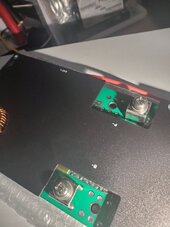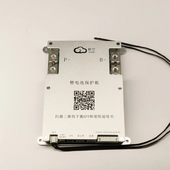What size bolt do I need for the jk-b2a8220p
I’m doing 8 cells at 24v. I think I’m gonna do 8s, I have 2 bms’ so I can do 4s but I think for balancing 8s with 1 bms is better correct? Also I’m going 24v on the bank so I think with a multiplus 2 I’ll prob only pull 150 amps max from it at any surge.
I was thinking 2x 2awg wires would be enough for 150amps.
What’s the bolt and thread for these? I bought from docan and only got the balance wires and temp sensors… no wire lug or bolts.
I’ve looked it up and almost all the posts are about the wire size or doing a 2 into 1 set up.
Thank you.
I’m doing 8 cells at 24v. I think I’m gonna do 8s, I have 2 bms’ so I can do 4s but I think for balancing 8s with 1 bms is better correct? Also I’m going 24v on the bank so I think with a multiplus 2 I’ll prob only pull 150 amps max from it at any surge.
I was thinking 2x 2awg wires would be enough for 150amps.
What’s the bolt and thread for these? I bought from docan and only got the balance wires and temp sensors… no wire lug or bolts.
I’ve looked it up and almost all the posts are about the wire size or doing a 2 into 1 set up.
Thank you.








